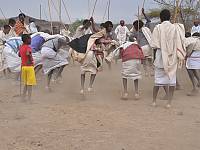
New inscriptions to the Representative List of the Intangible Cultural Heritage of Humanity
١ ديسمبر، ٢٠١٦Addis Ababa (Ethiopia) - Sixteen new elements have been added to the Representative List of the Intangible Cultural Heritage following the decisions adopted by the ›››
